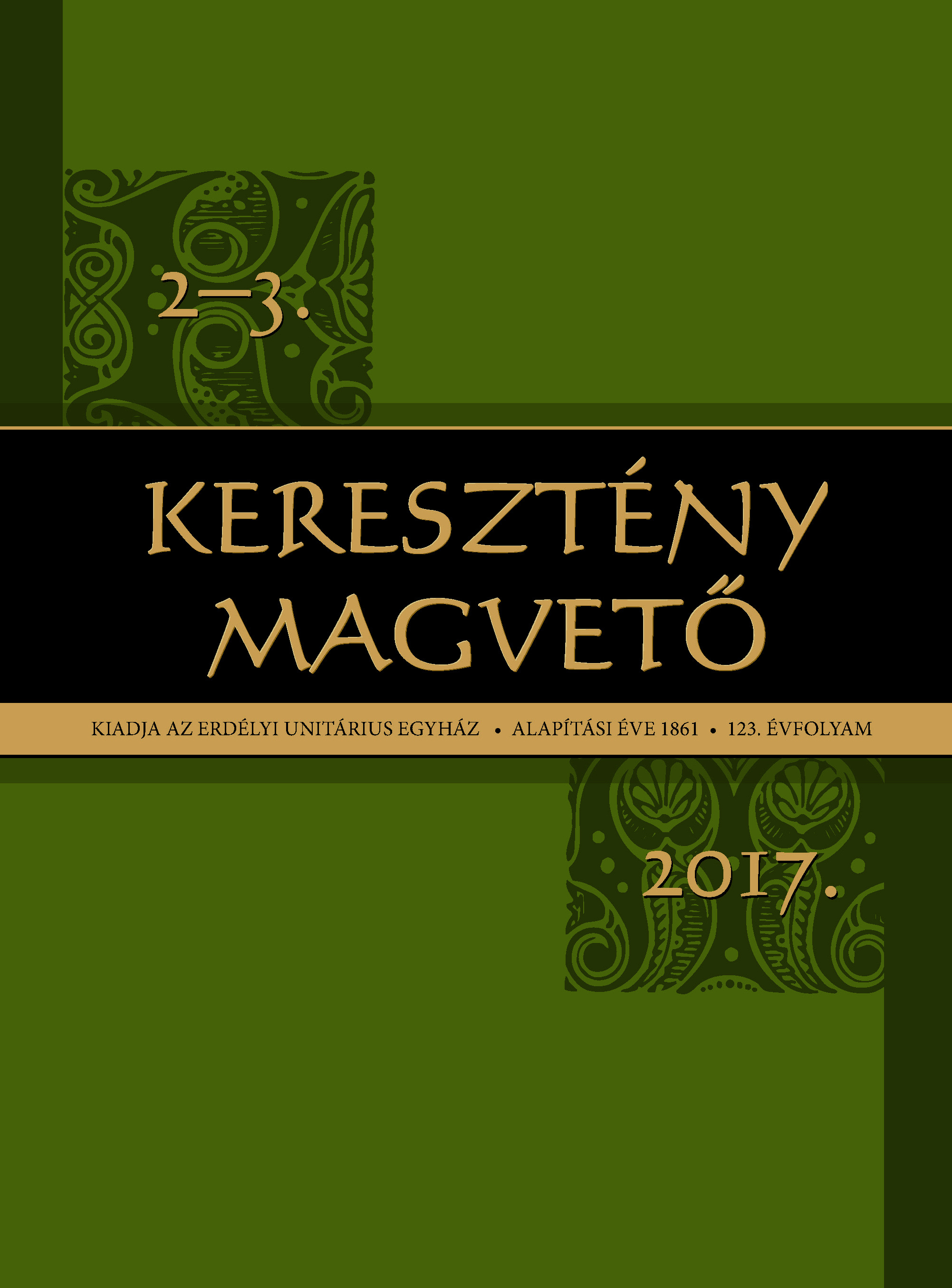Az unitárius éneklés kezdetei
Beginnings of Unitarian Singing
Author(s): Gabriella Hubert H.Subject(s): History, Cultural history, History of Religion
Published by: Erdélyi Unitárius Egyház
Keywords: Unitarian church singing; Unitarian congregational hymnal; conscious selection of songs; Enyedi, György (1555–1597)
Summary/Abstract: Besides the results of the history of Unitarian ideas and Church, the rich heritage of Unitarian singing has recently gained more recognition. This heritage shows unique signs compared to that of other Protestant denominations, such as its dogmatic aspect, the concious selection of songs, that singing was controlled by the Church and the poetical form of songs.This study is a further exploration of well known sources. It attempts to discover whether there was a Hungarian language printed Unitarian congrega- tional hymnal in the 16th century, and what Unitarian congregations might have been singing during that period (see the tables of types of hymnals and hymns). It is only certain about the first quarter of a century that a manuscript gradual (Hungarian liturgical songs) and a manuscript rhymed Psalter existed. It is impossible to prove or to refute the existence of a congregational hymnal between 1567 and 1592 based on existing data. A dogmatic analysis of Unitarian songs may bring us closer to the answer.Singing developped a lot during the time of György Enyedi. The first known printed hymnal (1616) was meant to be used by Believers, because it had a small format (12”). Based on the printing of the first, liturgical part we can suppose that, while the choir was singing from a large size, manuscript gradual, the Believers were following the liturgy from a small hymnal in their hands. By 1616, the Hungarian congregation of Kolozsvár had acheived a high degree of singing. This development started during the last decade of the 16th century.What did Believers sing? Invocations, hymns before and after the sermon, hymns in the order of the ecclesiastical year, catethetical songs, thematically structured thanksgivings and praises, just as in other Protestant churches. The largest group of songs contains psalms. Our hypothesis is that György Enyedi took part in creating this group of psalms.
Journal: KERESZTÉNY MAGVETŐ
- Issue Year: 123/2017
- Issue No: 2-3
- Page Range: 165-176
- Page Count: 12
- Language: Hungarian

